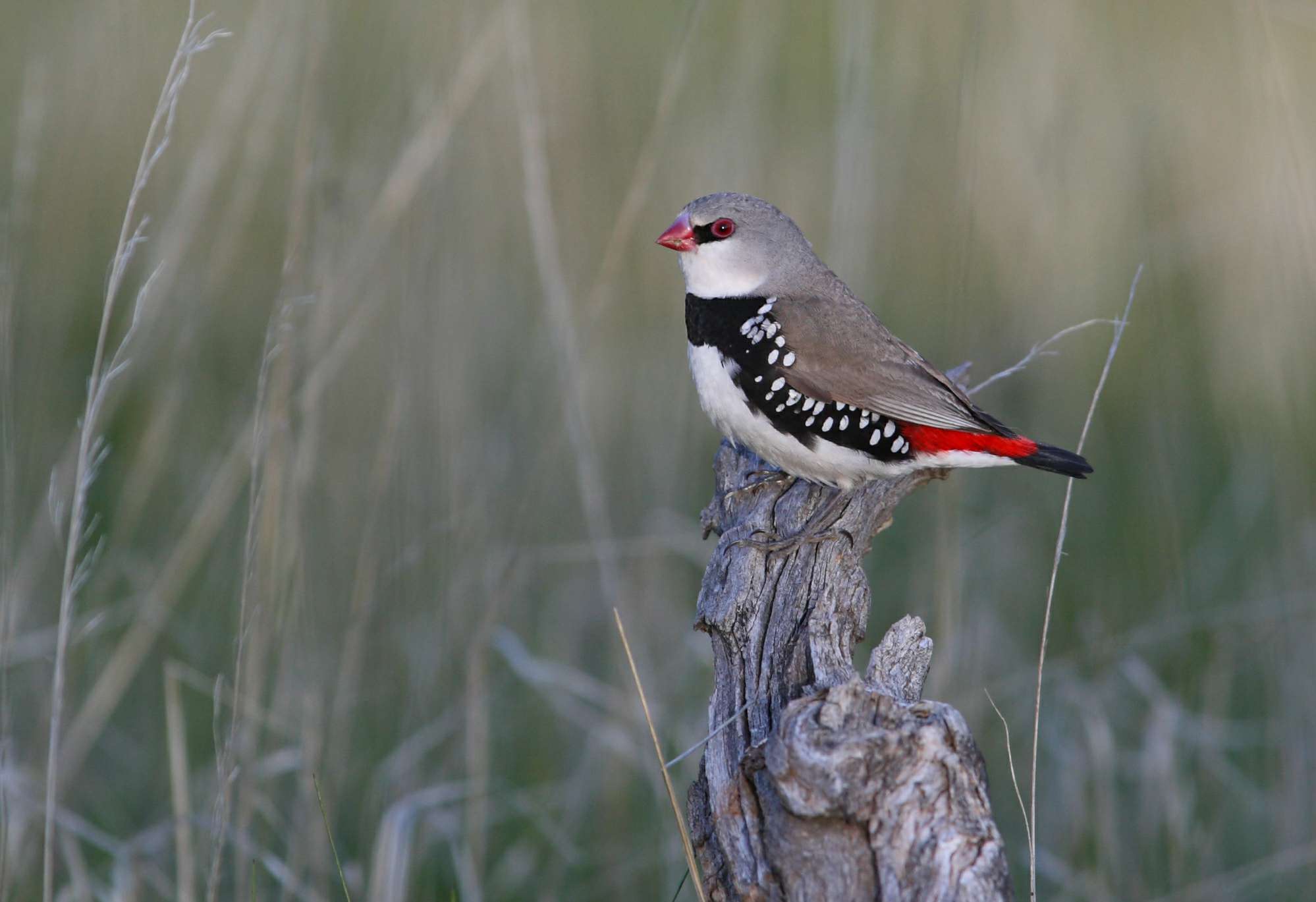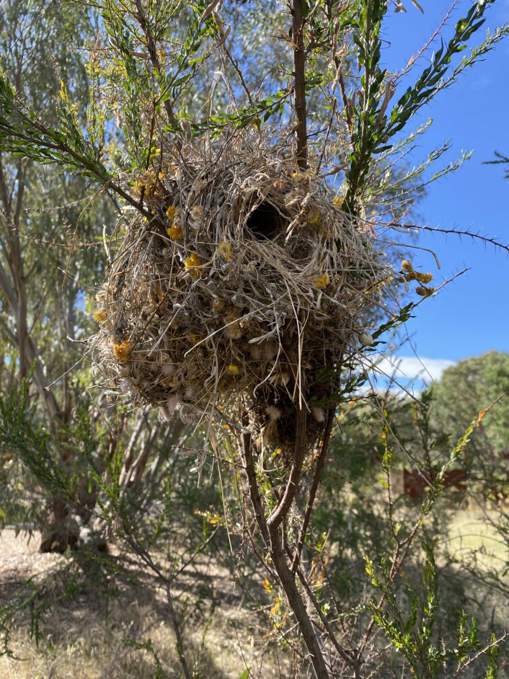The Goulburn Broken Catchment Management Authority is celebrating birds and bats in 2024 with the Year of the Wing community awareness campaign. This month, the Diamond Firetail bird is featured.
Goulburn Broken CMA project officer, Janice Mentiplay-Smith, said the tiny Diamond Firetail was one of three species of finch in Victoria and one of five in Australia.
“It’s a member of the threatened Victorian Temperate Woodland Bird Community, a declining suite of 24 bird species predominantly associated with drier woodlands on the slopes and plains north of the Great Dividing Range,” Ms Mentiplay-Smith said.
“The Diamond Firetail and other similar-sized, ground-feeding seed eaters are under threat from competition by invasive pest species such as the European Sparrow, which aggressively and successfully occupy the same ecological niche as the Diamond Firetail.
“As a seed eater, the Diamond Firetail relies on the presence of seed producing plants and shrubby, grassy understory. Loss of this habitat through cleaning up the grasses, small shrubs and plants results in the loss of its ‘supermarket’ and places this beautiful little bird under greater pressure.”
The presence of larger native birds such as the Pied Currawong is also a major threat to the Diamond Firetail.
“Nest predation increases when a natural area becomes degraded and infested with weedy, invasive vegetation such as Briar Rose, Hawthorn and Cotoneaster which produce abundant, nutritious berries,” Ms Mentiplay-Smith said.
“Consequently, this gastronomic jackpot allows the Pied Currawong to comfortably remain in one place for its feeding requirements and channel its attention toward habitat dominance. Eventually the smaller, non-aggressive Diamond Firetail and similar vulnerable woodland birds are expelled.
“Should you be fortunate enough to have the stunning little Diamond Firetail visit your property, make sure its ‘supermarket’ of seed producing grasses and shrubs remain undisturbed, and deter the larger, more aggressive birds by not hand feeding them or planting berry-laden garden plants.”
When the time comes to seek a life partner, the male Diamond Firetail shows off his worth and nest material gathering prowess by grasping a long piece of grass in his bill and perching atop a vantage point to bob up and down in the hope of catching a female’s eye.
Diamond Firetail nests sometimes display flowers woven through the exterior. Although nice to look at, it simply demonstrates the Diamond Firetail’s preference for longer stems, which often have the flowers attached, for easier nest weaving and structural stability, rather than a design choice. Breeding season extends from August to January. Five or six eggs are laid, hatching after just 12 days. By day 22, the young have fledged and are ready to face the world.

Diamond Firetail by Chris Tzaros.

Diamond Firetail nest in Hedge Wattle, woven with Sticky Everlasting stems and flowers. Photo GB CMA.